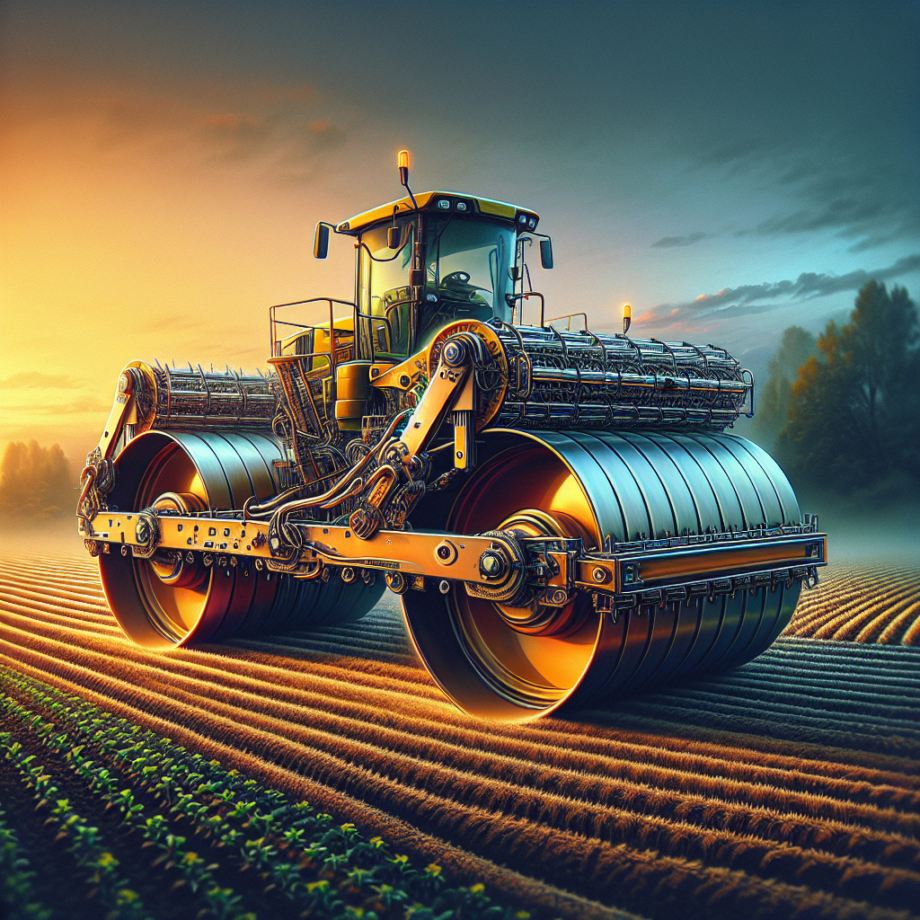Field rollers are essential tools in modern agriculture, playing a crucial role in soil management and crop production. This article delves into the importance of field rollers, their various types, and the specific scenarios in which they are most beneficial.
The Importance of Field Rollers
Field rollers are agricultural implements used to flatten land or break up large clumps of soil. They are typically towed behind tractors and come in various sizes and designs to suit different farming needs. The primary purpose of field rollers is to create a smooth, even surface, which can significantly impact crop yield and soil health.
Soil Compaction and Seedbed Preparation
One of the main benefits of using field rollers is soil compaction. While excessive compaction can be detrimental, a moderate level is often necessary for creating an optimal seedbed. Field rollers help to press down the soil, eliminating air pockets and ensuring good seed-to-soil contact. This is crucial for seed germination and early plant development.
Moreover, field rollers can break up large clods of soil, making the seedbed more uniform. This uniformity is essential for even seed distribution and consistent crop growth. A well-prepared seedbed can also improve water infiltration and reduce soil erosion, contributing to better overall soil health.
Post-Planting Benefits
Field rollers are not only useful before planting but also after. Rolling the field post-planting can help to press seeds into the soil, ensuring they are adequately covered. This can protect seeds from being eaten by birds or washed away by rain. Additionally, rolling can help to firm up the soil around the seeds, promoting better root establishment and growth.
Types of Field Rollers
There are several types of field rollers, each designed for specific tasks and soil conditions. Understanding the different types can help farmers choose the right tool for their needs.
Cambridge Rollers
Cambridge rollers, also known as ring rollers, are composed of a series of rings or discs mounted on a central axle. These rings can vary in size and shape, allowing the roller to break up clods and level the soil effectively. Cambridge rollers are particularly useful for seedbed preparation and post-planting rolling.
Flat Rollers
Flat rollers are simple, cylindrical rollers that provide even compaction across the field. They are ideal for flattening land and creating a smooth surface for planting. Flat rollers are often used in conjunction with other tillage equipment to prepare the seedbed.
Heavy Rollers
Heavy rollers are designed for more intensive compaction tasks. They are typically filled with water or sand to increase their weight, allowing them to press down the soil more effectively. Heavy rollers are useful for breaking up hard soil and creating a firm seedbed in challenging conditions.
When to Use Field Rollers
The timing of field roller use is critical to achieving the desired results. Different stages of the farming cycle require different approaches to rolling.
Pre-Planting
Using field rollers before planting helps to create an even seedbed, which is essential for uniform seed distribution and germination. Rolling the field after initial tillage can break up clods and level the soil, making it easier to plant seeds at a consistent depth.
Post-Planting
Rolling the field after planting can help to press seeds into the soil, ensuring good seed-to-soil contact. This can protect seeds from being eaten by birds or washed away by rain. Post-planting rolling can also help to firm up the soil around the seeds, promoting better root establishment and growth.
Post-Harvest
Field rollers can also be used after harvest to break up crop residues and prepare the field for the next planting season. Rolling the field post-harvest can help to incorporate organic matter into the soil, improving soil structure and fertility.
Conclusion
Field rollers are versatile tools that play a crucial role in modern agriculture. They help to create an optimal seedbed, improve seed-to-soil contact, and promote better crop growth. By understanding the different types of field rollers and when to use them, farmers can enhance their soil management practices and achieve better crop yields.
